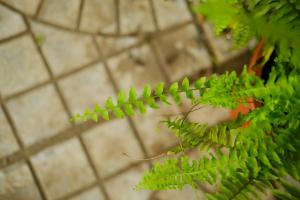Do Plants Release Water During Photosynthesis?
Photosynthesis is the process by which plants convert light energy into chemical energy to produce glucose and oxygen from carbon dioxide and water. This process is vital for the survival of plants and is responsible for the release of oxygen into the atmosphere. However, there has been a long-standing debate on whether plants release water during photosynthesis or not. Here, we explore this question in more detail.
The Process of Photosynthesis
During photosynthesis, plants absorb sunlight through chlorophyll present in their leaves. This energy is used to convert carbon dioxide and water into glucose and oxygen. The process is divided into two stages: the light-dependent reactions and the light-independent reactions, also known as the Calvin cycle.
During the light-dependent reactions, light energy is used to split water molecules into oxygen and hydrogen ions. This step occurs in the thylakoid membrane of chloroplasts. The oxygen is released into the atmosphere as a by-product, while the hydrogen ions are used in the next stage of photosynthesis.
In the light-independent reactions, CO2 from the atmosphere is converted into glucose using energy from the hydrogen ions, which come from breaking down water molecules. The glucose is then used by the plant for growth and development.
Water Release During Photosynthesis
While the splitting of water molecules during the light-dependent reactions releases oxygen, it does not necessarily mean that water is released from the plant. In fact, the water molecules are broken down into their individual components – hydrogen ions and oxygen – and the hydrogen is retained by the plant to be used in the production of glucose.
However, plants do release water through a process called transpiration. This occurs when water is taken up by the roots and transported up the stem to the leaves, where it is released into the atmosphere through small pores called stomata. This process helps to keep the plant hydrated and to carry nutrients up from the soil.
Conclusion
In summary, while plants do release oxygen into the atmosphere during photosynthesis, they do not release water. Instead, water molecules are split into hydrogen ions and oxygen during the light-dependent reactions, and the hydrogen is retained by the plant to aid in the production of glucose. Water is released from the plant through transpiration, a separate process that helps to keep the plant hydrated and healthy.
Understanding the processes that occur during photosynthesis is essential for understanding the role that plants play in our environment. While the question of whether plants release water during photosynthesis is a complex one, the evidence suggests that they do not. However, it is important to continue researching this area to enhance our understanding of how plants work and how they can be harnessed to create sustainable solutions for our future.

 how many times do yo...
how many times do yo... how many planted tre...
how many planted tre... how many pine trees ...
how many pine trees ... how many pecan trees...
how many pecan trees... how many plants comp...
how many plants comp... how many plants can ...
how many plants can ... how many plants and ...
how many plants and ... how many pepper plan...
how many pepper plan...





























